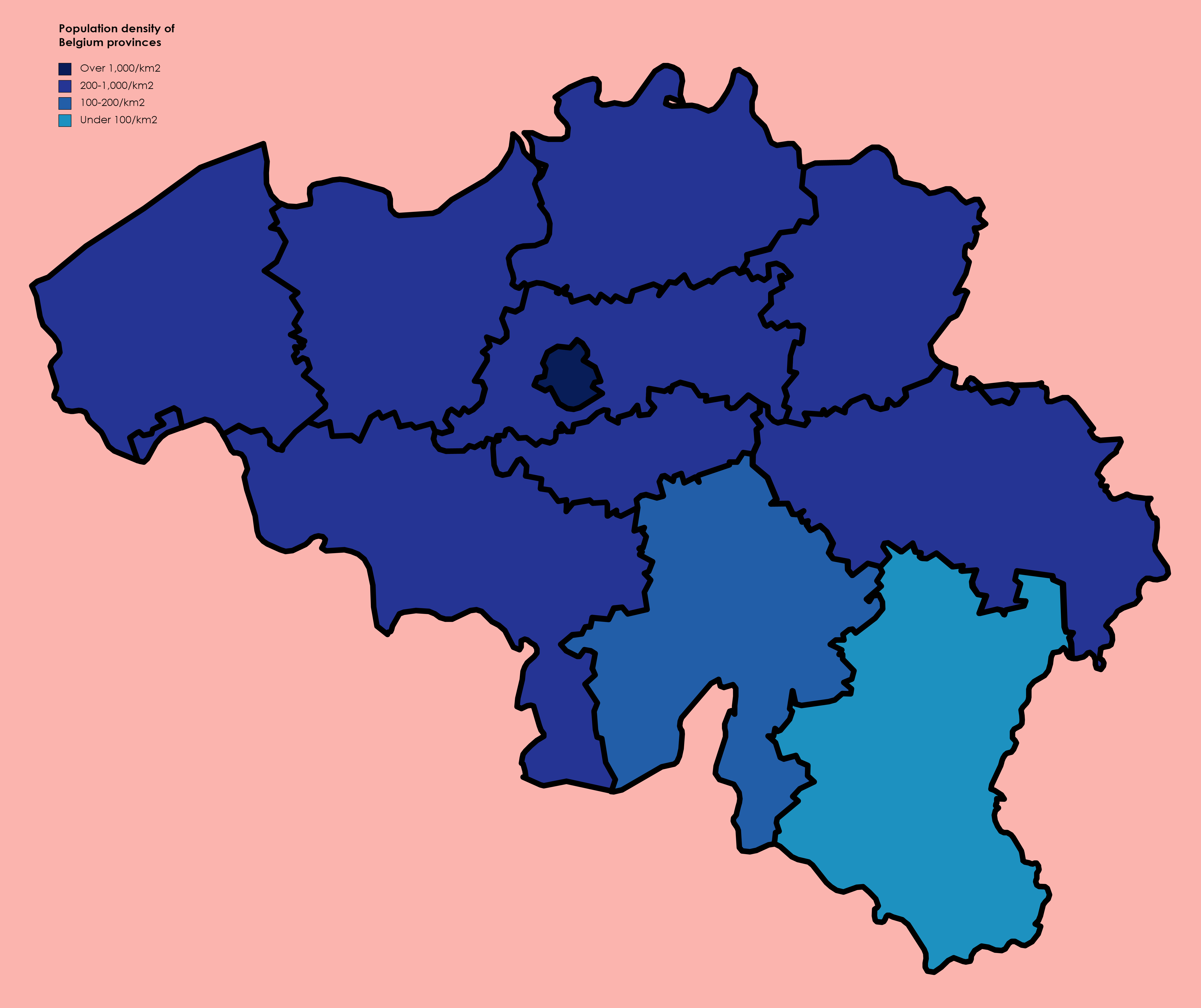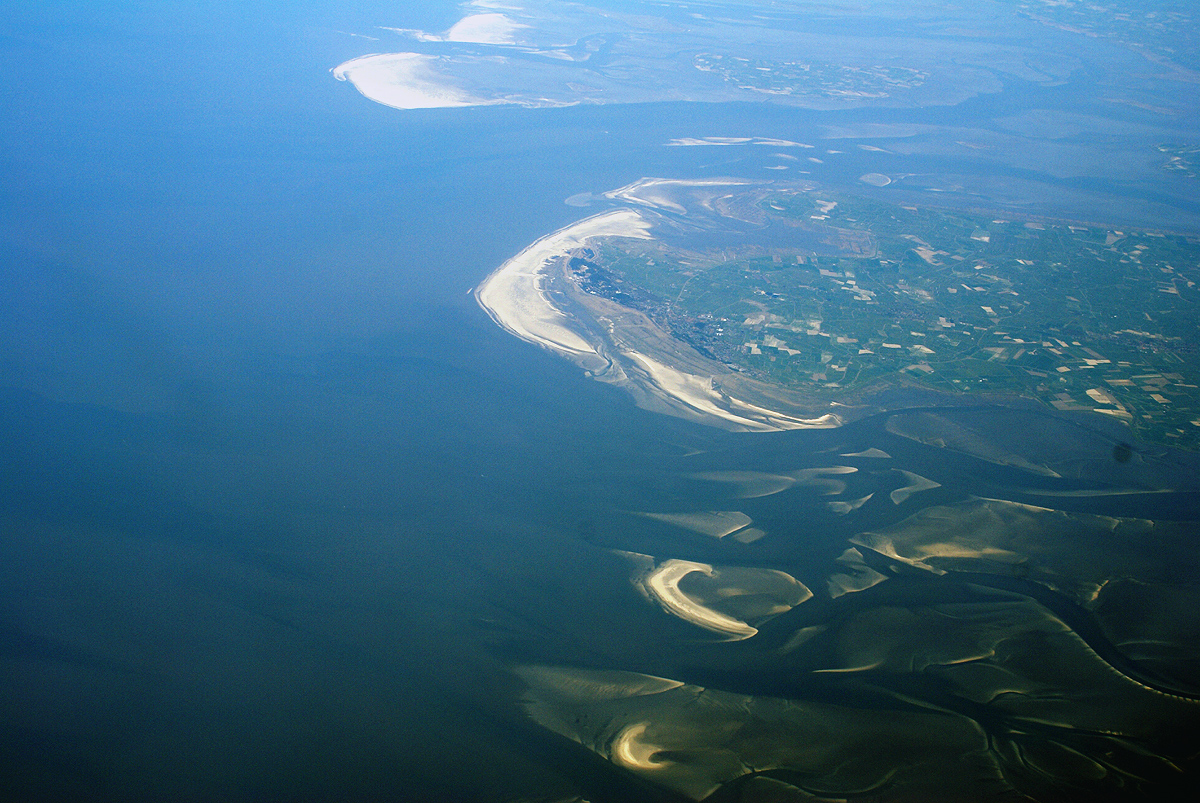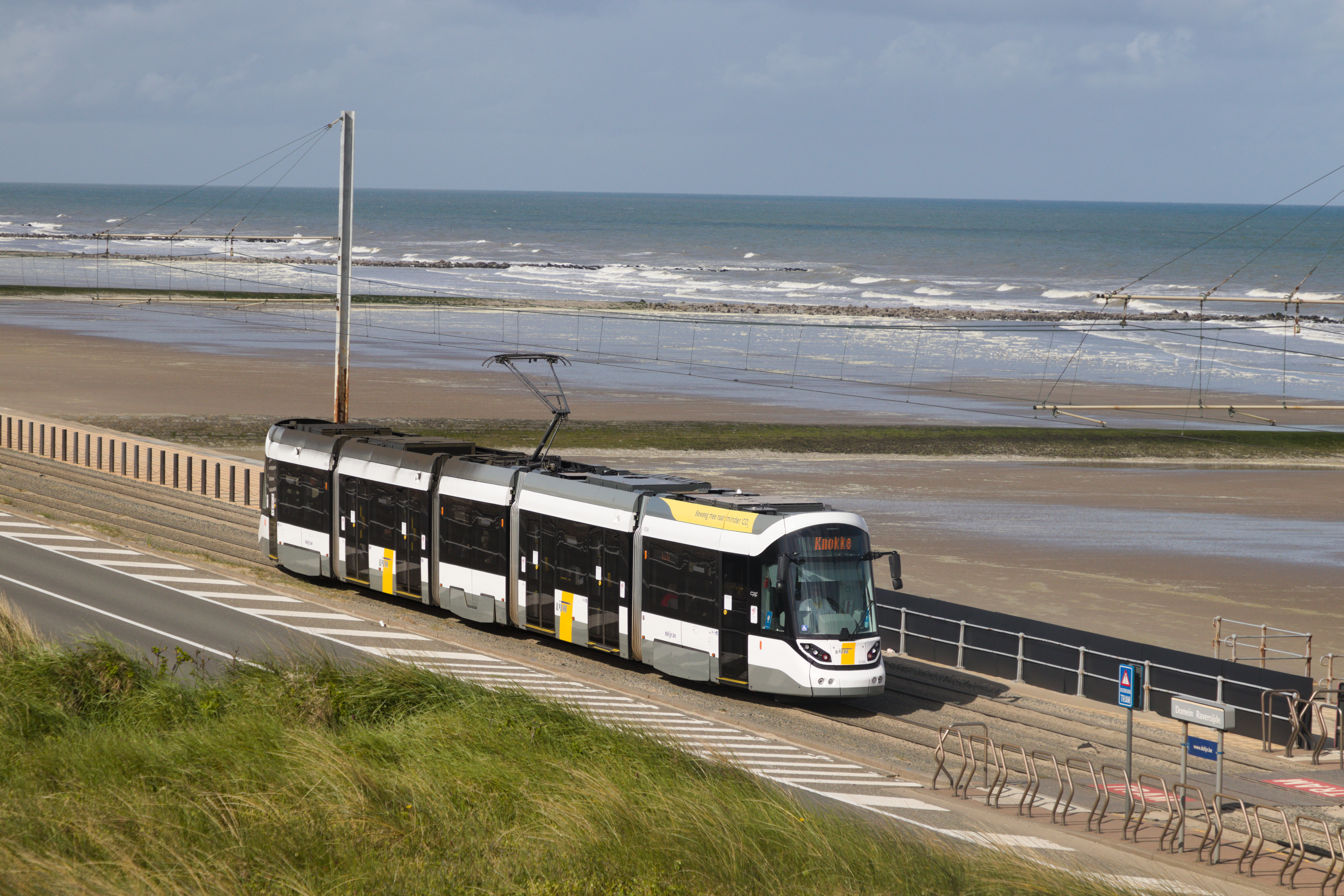|
West Flanders
West Flanders is the westernmost province of the Flemish Region, in Belgium. It is the only coastal Belgian province, facing the North Sea to the northwest. It has land borders with the Dutch province of Zeeland to the northeast, the Flemish province of East Flanders to the east, the Walloon province of Hainaut in the south and the French department of Nord to the west. Its capital is Bruges (''Brugge''). Other important cities are Kortrijk in the south and Ostend (''Oostende'') on the coast, Roeselare and Ypres (''Ieper''). The province has an area of which is divided into eight administrative districts (''arrondissementen'') containing 64 municipalities. As of January 2024, West Flanders has a population of over 1.22 million. The North Sea coast of Belgium, an important tourism destination, lies in West Flanders. A tram line runs the length of the coast, from De Panne on the French border to Knokke-Heist on the Dutch border. West Flanders has two seaports, the ... [...More Info...] [...Related Items...] OR: [Wikipedia] [Google] [Baidu] |
Provinces Of Belgium
The Kingdom of Belgium is divided into three Communities, regions, and language areas of Belgium, regions. Two of these regions, Flanders and Wallonia, are each subdivided into five provinces. The third region, Brussels, does not belong to any province, nor is it subdivided into provinces. Instead, it has amalgamated both regional and provincial functions into a single "Capital Region" administration. Most of the provinces take their name from earlier duchy, duchies and county, counties of similar location, while their territory is mostly based on the 130 departments of the First French Empire, departments installed during French annexation. At the time of the Independence of Belgium, creation of Belgium in 1830, only nine provinces existed, including the province of Brabant, which held the City of Brussels. In 1995, Brabant was split into three areas: Flemish Brabant, which became a part of the region of Flanders; Walloon Brabant, which became part of the region of Wallonia; an ... [...More Info...] [...Related Items...] OR: [Wikipedia] [Google] [Baidu] |
Kortrijk
Kortrijk ( , ; or ''Kortrik''; ), sometimes known in English as Courtrai or Courtray ( ), is a Belgian City status in Belgium, city and Municipalities in Belgium, municipality in the Flemish Region, Flemish Provinces of Belgium, province of West Flanders. With its 80,000 inhabitants (2024) Kortrijk is the capital and largest city of the judicial and administrative arrondissement of Kortrijk. The wider municipality comprises the city of Courtrai proper and the villages of Aalbeke, Bellegem, Bissegem, Heule, Kooigem, Marke (Belgium), Marke, and Rollegem. Courtrai is also part of the cross-border Lille-Kortrijk-Tournai metropolitan area. The city is on the river Leie, southwest of Ghent and northeast of Lille. Mouscron in Wallonia is just south of Courtrai. Courtrai originated from a Gallo-Roman town, ''Cortoriacum'', at a crossroads near the Leie river and two Roman roads. In the Middle Ages, Courtrai grew significantly thanks to the flax and wool industry with France and En ... [...More Info...] [...Related Items...] OR: [Wikipedia] [Google] [Baidu] |
Kemmelberg
The Kemmelberg (, ) is a hill formation in Flanders, Belgium. It is located less than a kilometre from the village of Kemmel, part of the municipality of Heuvelland in the province of West Flanders. The Kemmelberg is the highest point in the province with an altitude of , this is the geodetic point with mark Ch63.1, as measured by the National Geographical Institute (NGI) in Brussels in October 1951 via optical levelling. History The earliest settlements on the Kemmelberg date to 2,500 ago, when Celts, Celtic tribes of the Hallstatt culture populated the area. The hill takes its name from Camulos, the Celtic god of war. During World War I, it was the location of one of the war's most ferocious battles, the Battle of the Lys (1918), Fourth Battle of Ypres, because of its strategic importance. On 25April 1918, Imperial German Army, German imperial forces, hoping to force a breakthrough to the North Sea, started attacking the French troops on the Kemmelberg with gas grenades. At 6 a ... [...More Info...] [...Related Items...] OR: [Wikipedia] [Google] [Baidu] |
Polder
A polder () is a low-lying tract of land that forms an artificial hydrology, hydrological entity, enclosed by embankments known as levee, dikes. The three types of polder are: # Land reclamation, Land reclaimed from a body of water, such as a lake or the seabed # Floodplain, Flood plains separated from the sea or river by a dike # Marshes separated from the surrounding water by a dike and subsequently drained; these are also known as ''koogs'', especially in Germany The ground level in drained marshes subsidence, subsides over time. All polders will eventually be below the surrounding water level some or all of the time. Water enters the low-lying polder through infiltration (hydrology), infiltration and water pressure of groundwater, or rainfall, or transport of water by rivers and canals. This usually means that the polder has an excess of water, which is pumped out or drained by opening sluices at low tide. Care must be taken not to set the internal water level too low. Pold ... [...More Info...] [...Related Items...] OR: [Wikipedia] [Google] [Baidu] |
Coastline Of The North Sea
The coastline of the North Sea has been evolving since the end of the last ice age. The coastline varies from fjords, river estuaries to mudflats. The eastern and western coasts of the North Sea are jagged, as they were stripped by glaciers during the ice ages. The coastlines along the southernmost part are soft, covered with the remains of deposited glacial sediment, which was left directly by the ice or has been redeposited by the sea. The Norwegian mountains plunge into the sea, giving rise, north of Stavanger, to deep fjords and archipelagos. South of Stavanger, the coast softens, the islands become fewer. The eastern Scottish coast is similar, though less severe than Norway. Starting from Flamborough Head in the north east of England, the cliffs become lower and are composed of less resistant moraine, which erodes more easily, so that the coasts have more rounded contours. In the Netherlands, Belgium and in the east of England (East Anglia) the littoral is low and marshy. ... [...More Info...] [...Related Items...] OR: [Wikipedia] [Google] [Baidu] |
Port Of Ostend
The Port of Ostend (Dutch: ''Oostende'') is situated in Ostend, West Flanders in the Flemish Region of Belgium. The port services freight transport between Ostend and Ramsgate, Ipswich and North Killingholme Haven. Passenger transport between Ostend and Ramsgate was provided by Transeuropa Ferries from 1998 to 2013. 26 April 2013, Kent Online. Retrieved 27 August 2015. History As part of the city of the port was founded in 1584 when the sand dunes were pushed back to create the beginnings of the modern basin. Tw ...[...More Info...] [...Related Items...] OR: [Wikipedia] [Google] [Baidu] |
Port Of Zeebrugge
The Port of Zeebrugge (also referred to as the Port of Bruges or Bruges Seaport) is a large container, bulk cargo, new vehicles and passenger ferry terminal port on the North Sea. The port is located in the municipality of Bruges, West Flanders in the Flemish Region of Belgium, handling over 50 million tonnes of cargo annually. The port of Zeebrugge is managed by the port authority MBZ (''Maatschappij van de Brugse Zeehaven'' - translated: 'Company of the Bruges Seaport'), an autonomous company regulated by public law, the city of Bruges being the main shareholder. History Zeebrugge is a multifaceted port that handles a wide range of trades: unit loads (trailers and containers), new cars, conventional general cargo, 'high & heavy' cargoes, dry and liquid bulk cargoes and natural gas. From a purely transit port Zeebrugge has gradually evolved into a centre for European distribution. The port has become a major European port since major development works were carried in the ... [...More Info...] [...Related Items...] OR: [Wikipedia] [Google] [Baidu] |
Port
A port is a maritime facility comprising one or more wharves or loading areas, where ships load and discharge cargo and passengers. Although usually situated on a sea coast or estuary, ports can also be found far inland, such as Hamburg, Manchester and Duluth; these access the sea via rivers or canals. Because of their roles as ports of entry for immigrants as well as soldiers in wartime, many port cities have experienced dramatic multi-ethnic and multicultural changes throughout their histories. Ports are extremely important to the global economy; 70% of global merchandise trade by value passes through a port. For this reason, ports are also often densely populated settlements that provide the labor for processing and handling goods and related services for the ports. Today by far the greatest growth in port development is in Asia, the continent with some of the world's largest and busiest ports, such as Singapore and the Chinese ports of Shanghai and Ningbo-Zhoushan. As ... [...More Info...] [...Related Items...] OR: [Wikipedia] [Google] [Baidu] |
Knokke-Heist
Knokke-Heist (; ) is a municipality in the Belgian province of West Flanders. The municipality comprises the towns of Heist-aan-Zee, Knokke, Duinbergen, Ramskapelle and Westkapelle. On January 1, 2006, Knokke-Heist had a total population of 34,063. The total area is 56.44 km2 which gives a population density of 603 inhabitants per km2. Knokke-Heist is located along the North Sea in a polder area on the Belgian border with the Netherlands. It is Belgium's best-known and most affluent seaside resort. History Middle Ages Originally, the marshy Zwin area was mostly settled by shepherds and fishermen. With the encouragement of the Counts of Flanders, several dykes were built between the 11th and the 13th century and the land successfully dewatered, giving rise to agriculture and further sheep breeding. New parishes were founded and the early settlement of Sint-Anna-ter-Muiden, later made part of Westkapelle, obtained city rights in 1242. The strategic importanc ... [...More Info...] [...Related Items...] OR: [Wikipedia] [Google] [Baidu] |
De Panne
De Panne (; ) is a town and a municipality located on the North Sea coast of the Belgian province of West Flanders. There it borders France, making it the westernmost town in Belgium. It is one of the most popular resort town destinations within Belgium. The municipality includes the village of Adinkerke. On 1 January 2011, De Panne had a total population of 10,748 on a total area of 23.90 km2, which gives a population density of 449.7 inhabitants per km2. Miscellaneous Famous people who have lived or died in De Panne include King Albert I and Queen Elisabeth, and John Aidan Liddell, VC, who died in De Panne in August 1915. The Belgian royal family lived in De Panne during the First World War because it was located in the tiny fraction of their country that was not conquered by the Germans. De Panne is home to Plopsaland, a theme park aimed at young children and located on the former grounds of Meli Park. De Panne was also the place where the first land yachts inten ... [...More Info...] [...Related Items...] OR: [Wikipedia] [Google] [Baidu] |
Belgian Coast Tram
The Coast Tram () is a light rail service connecting the cities and towns along the Belgian (West Flanders) coast between De Panne, near the French border, and Knokke-Heist, near the Dutch border. At in length, it is currently the world's longest metre gauge tram line, and the second-longest light rail service in the world after the A Line of the Los Angeles Metro Rail system, as well as one of the few interurban tramways in the world to remain in operation. The line is fully electrified at 600 V DC. History What is now the coast line started out as part of the extensive Belgian Vicinal tramway, a network of interurban trams that once covered the entire nation. The first section of the coast line between Ostend and Nieuwpoort was opened in 1885. This original route was further inland than the modern one and only short parts of the original section in Ostend and Nieuwpoort centres are still in operation. On its creation, the line was managed by the NMVB (''Nationale Maatsc ... [...More Info...] [...Related Items...] OR: [Wikipedia] [Google] [Baidu] |
Tourism In Belgium
Tourism in Belgium is one of Belgium's industries. Its accessibility from elsewhere in Europe makes it a popular tourist destination. The tourist industry generates 2.8% of Belgium's gross domestic product and employs 3.3% of the working population (142,000 people). 6.7 million people travelled to Belgium in 2005.Travel and Tourism in Belgium - euromonitor.com Two-thirds of them come from the larger nearby countries - , The , the |






